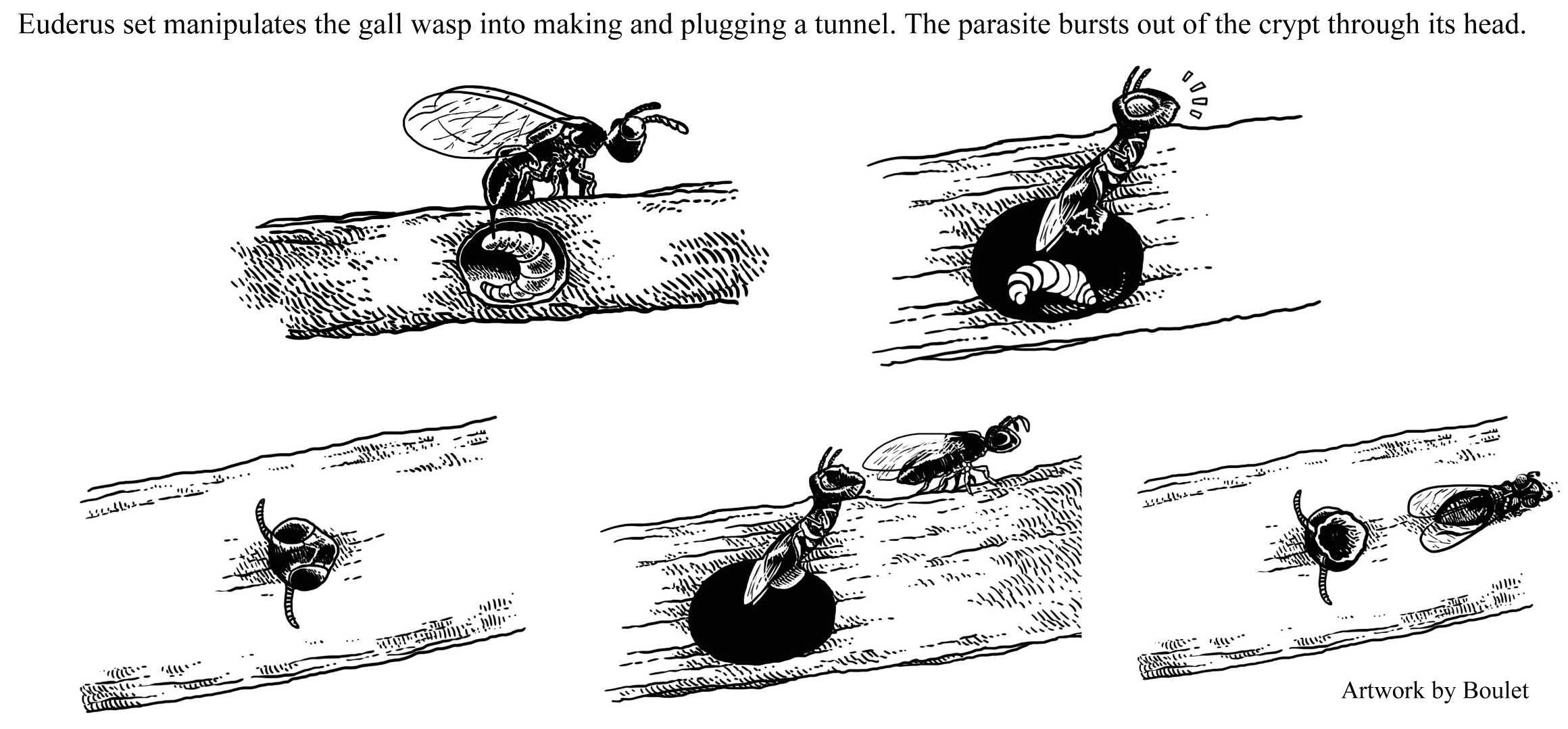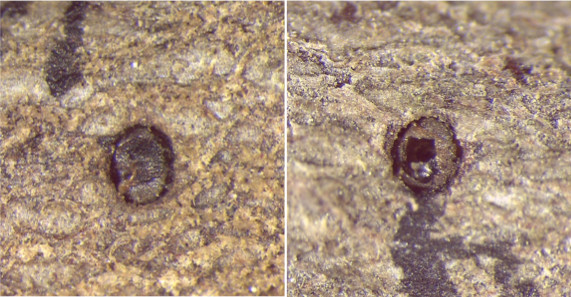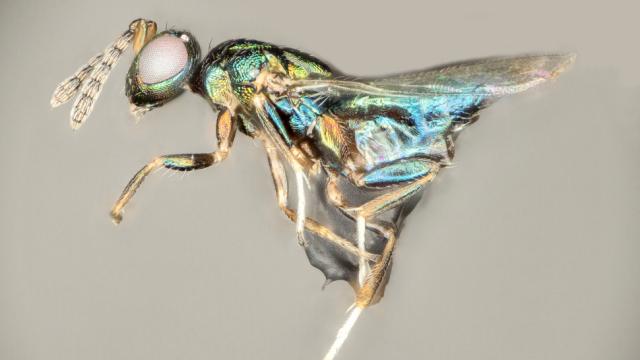Scientists have discovered a parasitic insect with a reproductive strategy straight out of an Alien movie. Dubbed the “crypt-keeper wasp,” it infects a rival species with its young, which, after hatching, proceed to chew their way out through the victim’s head.
The diabolical “crypt-keeper wasp,” or Euderus set. (Credit: Andrew Forbes/University of Iowa)
As described in the latest edition of Proceedings of the Royal Society B, the newly-discovered crypt-keeper wasp, formally known as Euderus set, lays its eggs directly inside the larvae of its rival, another parasitic wasp called the common gall wasp (B. pallida). In addition to changing the behaviour of the growing gall wasps, the crypt-keeper larvae go on to consume the internal organs of their victims, and then exit their hosts through the head.
This is an example not only of intra-family wasp-on-wasp action, but of one parasite taking full advantage of another — a rare phenomenon biologists call “hypermanipulation.”
Normally, the gall wasp goes about its own parasitic behaviour in peace. Rather than taking advantage of another insect, however, these parasites leech off the plant kingdom. To reproduce, the gall wasp manipulates the physical characteristics of its tree host, the sand live oak, hollowing out its stems. Female gall wasps lay their eggs inside these hollow cavities (called galls, hence the name) which provide sustenance and shelter for the young. Come spring, the baby bugs tunnel their way out of the “crypt,” beginning their lives as mature gall wasps.

Unperturbed reproduction of the gall wasp. (Image: Rice University/Boulet)
But this process doesn’t always go as planned, thanks to the devious behaviour of the crypt-keeper wasps.
As observed by Rice University biologists Kelley Weinersmith and Scott Egan, female crypt-keeper wasps also lay their eggs in the sand live oak’s hollowed out twigs — directly inside the gall wasp larvae. The unwelcome parasitoids, through a process still unknown to the researchers, alter the behaviour of their hosts, causing them to create a smaller exit hole than usual. When the gall wasps are ready to emerge, they get stuck trying to get out the hole. The crypt-keeper larvae then begin the gruesome process of eating their hosts’ internal organs, finally exiting the body — and the hollowed out twig — by chewing an escape hatch through the head.

The crypt-keeper wasp (Euderus set) in action. (Image: Rice University/Boulet)
“You have this one insect laying its eggs into another insect, controlling its behaviour, then devouring it from the inside out and [finally] emerging through its head capsule,” said Egan in a Rice University video. “I mean, that’s inherently a horror story that makes you happy to not be an insect.”

Left: The gall wasp with its head stuck in the hole. Right: The head with a hole where its parasitoid emerged. (Credit: Egan Lab/Rice University)
The researchers speculate that the parasitoid is somehow “cueing” its hosts to excavate their escape routes early, while also making them do so less effectively. “They only go part way and then they get stuck,” noted Weinersmith in a press release. “That’s what I love about parasite manipulation of host behaviour. So many of the stories that have been uncovered are just as cool as the coolest science fiction movie.”
Looking ahead, the researchers would like to do a CAT scan of wasp-infested sand live oak branches to get a better sense of what’s going on in there. The rest of us should probably just focus on erasing this information from our minds if we ever want to sleep again.
